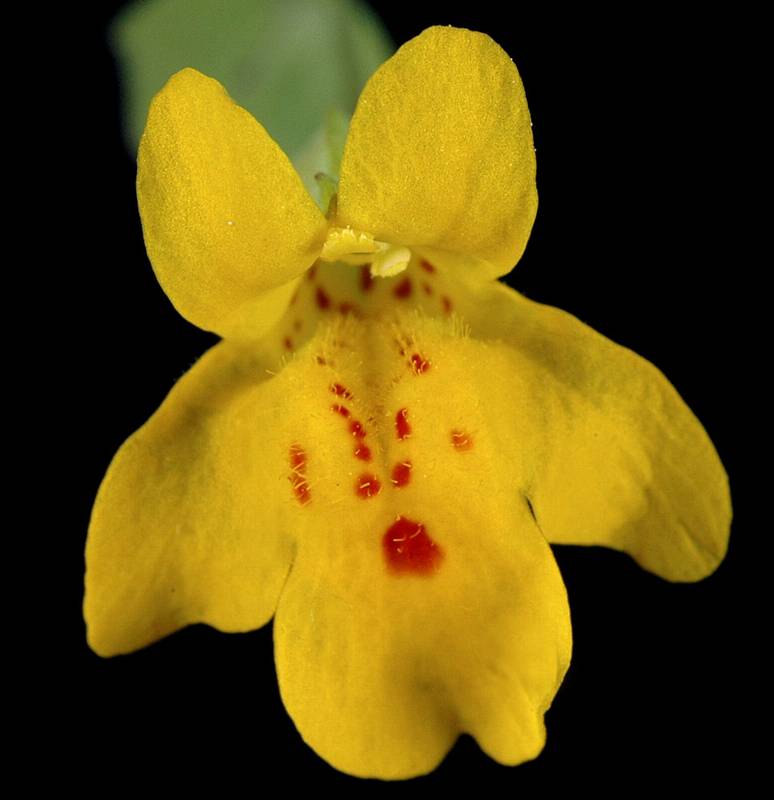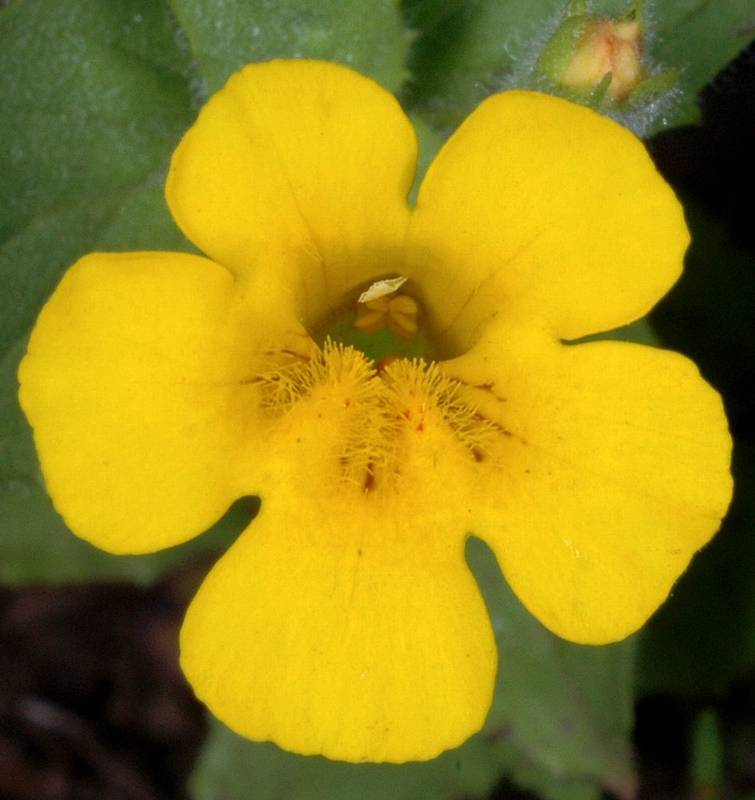Erythranthe guttata
Erythranthe moschata
seep monkey-flower, yellow monkey-flower
musk-flower, musk-plant
Leaves opposite, soft and often somewhat succulent, the blades from quite small to nearly 1 dm. long, irregularly dentate, ovate to reniform-cordate;
leaves nearly palmately veined, the 3-7 main veins arising near the base; lower leaves petiolate, becoming sessile upward, those of the inflorescence reduced and clasping.
Leaves opposite, remotely toothed, pinnately veined, sessile or short-petiolate, the blade ovate to elliptic-ovate, 1-8 cm. long and 7-35 mm. wide.
Flowers several to many in terminal racemes, on long pedicels, or solitary in dwarf forms;
calyx 5-toothed, irregular, the upper tooth much the largest, the 2 lower ones tending to fold upward;
corolla 1-4 cm. long, strongly bilabiate, with flaring throat, yellow with maroon dots or splotches on the pubescent lower lip;
stamens 4.
Flowers solitary in the leaf axils on long pedicels;
calyx 7-13 mm. long, viscid-villous, especially on the 5 rib angles, the 5 teeth pointed, 2-4 mm. long, the upper tooth a little larger than the others;
corolla 1.5-3 cm. long, yellow, often with some dark lines or dots, only slightly bilabiate, the tube nearly cylindrical;
stamens 4.
Capsule.
Capsule.
Erythranthe guttata
Erythranthe moschata
- Local floras:
BC,
CA,
OR,
WA
- Local Web sites:
CalFlora,
CalPhotos,
Flora NW,
PNW Herbaria
WildflowerSearch
iNaturalist (observations)
- LBJ Wildflower Center
- SEINet
- Plants of the World Online
- Encyclopedia of Life
- Wikipedia
- Google Image Search
- Local floras:
BC,
CA,
OR,
WA
- Local Web sites:
CalFlora,
CalPhotos,
Flora NW,
PNW Herbaria
WildflowerSearch
iNaturalist (observations)
- LBJ Wildflower Center
- SEINet
- Plants of the World Online
- Encyclopedia of Life
- Wikipedia
- Google Image Search



